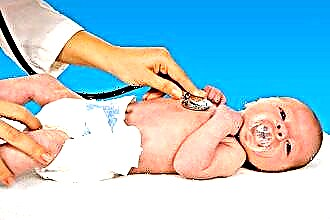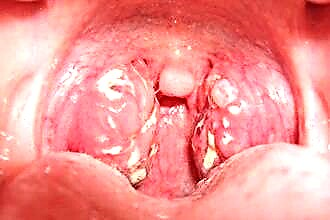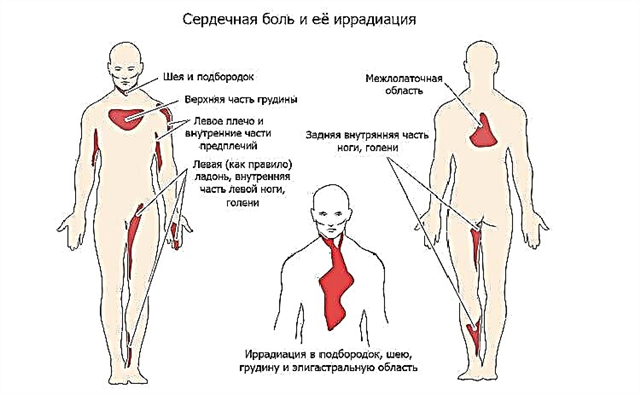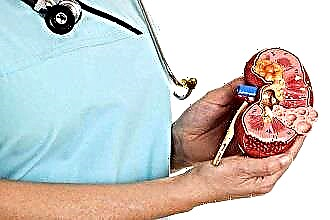Such a natural state as a physiological runny nose in infants is often observed in the first months of life. Its appearance is explained by the adaptation of the nasal mucosa to new environmental factors. After birth, the mucous membrane undergoes a massive attack of microbes and dust, as a result of which enhanced cleansing, moisturizing and protection of the mucous membrane is required. In addition, warming of the air is necessary to prevent damage to the lower respiratory tract.
 Of course, for young parents, snot in a newborn is a reason for panic. They begin to remember where the child could have been hypothermic or infected. What do you need to know to distinguish a physiological rhinitis in a newborn?
Of course, for young parents, snot in a newborn is a reason for panic. They begin to remember where the child could have been hypothermic or infected. What do you need to know to distinguish a physiological rhinitis in a newborn?
- this condition is characterized by transparent discharge with a fluid consistency. Parents should be alerted by thick snot with a yellowish or green tint;
- usually the general condition of the infant is not affected. Capriciousness can be observed due to difficulty in nasal breathing with the accumulation of mucus in the nasal cavities. The baby has neither fever nor excessive anxiety;
- the natural process of habituation of the mucous membrane is accompanied by the release of a small amount of mucus. If the volume of secretions increases, they become viscous, an infectious or cold rhinitis should be suspected.
The child's sleep with a physiological rhinitis does not suffer, and there is no snoring, since the nasal mucosa remains practically non-edematous.
The main question that worries parents is how long a physiological rhinitis lasts. In most cases, the duration of the acute stage is 15 days, however, the final cessation of snot production is noted in the third month of life of children.
The mechanism of adaptation of the nasal mucosa
In the prenatal period of development, the mucous membrane of the nasal cavities does not fulfill its functions, since breathing occurs mainly through the umbilical cord. Oxygenated blood, coming from the mother, ensures the full development of organs. The respiratory system practically does not participate in breathing, its work begins only in the postpartum period.
After birth, the child finds himself in a new habitat, which requires some time to adapt. Faced with irritating environmental factors, the nasal mucosa begins to vigorously produce mucus. This is a defensive reaction that cleans up infection and dust from the nasal passages.
Usually, swelling of the mucous membrane is not observed, however, its appearance against the background of improper cleansing of the baby's nasal passages is possible. Even with a slight edema, nasal breathing is difficult to the point of complete absence. This is due to the narrow passages of the nose, which interfere with the normal passage of air.
How can I help the child?
Noticing the symptoms of a common cold, some parents begin to use baby nasal drops with a vasoconstrictor effect. This is absolutely the wrong treatment tactic. To facilitate nasal breathing in infants, you must:
- maintain the optimum humidity level in the children's room - 65%. To do this, you can use a special device (humidifier), regularly carry out important cleaning or hang a wet diaper over a heat source (battery). Sometimes, doctors may recommend inhalation. It is enough to draw hot water into the bathroom and periodically stand next to it with the child for about 5-6 minutes;
- observe the temperature regime - not higher than 20 degrees. It is noticed that dry warm air predisposes the body to infection, microbes accumulate in the mucus and begin to multiply rapidly;
- ventilate the room when the child is not in the nursery. Walking in the park is also helpful, so that the organs get enough oxygen. If the baby has a normal temperature, you should not give up walking just because of rhinorrhea. Fresh air naturally cleans the nose and makes breathing easier. The baby needs to be dressed according to the weather, because both freezing and overheating are harmful for him;
- provide adequate feeding. If nasal breathing is difficult, sucking on the breast or bottle becomes difficult. Babies, when clasping the nipple, begin to gasp and cry. In this case, the risk of weight loss increases, therefore it is recommended to choose an alternative method of feeding, for example, from a spoon or mug;
- you need to supplement the drinking diet with boiled water. On the recommendation of a doctor, you can drink a child with insufficient feeding with milk or mixtures. The pediatrician calculates the daily volume of fluid that is required to ensure the functioning of all organs and maintain optimal water balance.
Drug therapy
A physiological runny nose can be observed against the background of teething, which is considered the norm.
Given the physiological origin of the common cold, there is no need to use medication. The main task of parents is to properly care for the child and timely identify signs of infectious rhinitis.
Cold symptoms can be relieved with a nasal cleansing procedure. For this purpose, parents should purchase a special aspirator. It has a soft tip so that the nasal mucosa is not injured.
It is not always possible to thoroughly clean the nasal passages with a cotton swab. Moreover, the risk of tissue damage and irritation of the mucous membrane by the remnants of cotton wool increases. Saline, Aqua Maris, Humer, or Dolphin can also be used to improve breathing. They are absolutely safe, widely used in pediatrics from the first days of life.
At home, you can make a saline solution with inexpensive ingredients. The recipe includes 2 g of salt, 220 ml of boiled water. In order not to irritate the mucous membrane with a cold solution, it is necessary to slightly warm the water.
Remember, it is forbidden to inject liquid into the nasal passages under pressure; therefore, it is not recommended for infants to use nasal preparations in the form of a spray. A few drops of saline should be dripped into each nasal passage, and then mucus should be removed with an aspirator. At the end of the procedure, you can once again drip the solution onto the mucous membrane to moisturize it.
Prohibitions for parents

In order not to harm the baby, you need to follow some recommendations:
- it is forbidden to use nasal drops with a vasoconstrictor effect, for example, Nazivin, Nazik. Their action is aimed at reducing the diameter of blood vessels, which allows for a while to facilitate breathing through the nose. The use of these drugs is justified in other forms of rhinitis, when the child does not have nasal breathing at all, pronounced rhinorrhea is noted, or complications of the disease develop. Improper use of vasoconstrictor drugs leads to the development of addiction and increased rhinorrhea;
- you should not bury your nose with medicines with an antibacterial or hormonal composition, which can aggravate the course of the disease;
- using a nasal spray or douche to rinse the nose is fraught with otitis media. This is due to the anatomical features of this area. The solution can get into the auditory tube, ear cavity and provoke otitis media.
Do not use an aspirator frequently. It is enough to cleanse the mucous membrane 3-4 times a day. Aspirating mucus every hour increases the risk of dryness and tissue damage.
When do you need medical help?
With a physiological rhinitis, it is important to detect atypical symptoms for him in time.If, against the background of mucosal adaptation, the following clinical signs appear, it is time to consult a pediatrician:
 coughing;
coughing;- increased rhinorrhea, a change in the consistency of the discharge to a thicker one, the appearance of a yellow, greenish tinge of mucus or a bloody rhinitis;
- subfebrile condition;
- poor sleep;
- refusal to feed;
- dyspnea;
- breathing through the mouth, which is a consequence of nasal congestion, lack of patency of its passages;
- snore;
- hoarseness of voice.
If signs of a runny nose persist into the fourth month of life, you should see a doctor. The reason for the deterioration of the general condition and an increase in local symptoms can be an infection of the body or a cold.
The baby's immunity is in its infancy, so any infection or hypothermia can contribute to the development of the disease. Rhinitis is most often diagnosed in children who eat formula, because when breastfeeding, the baby receives protective immunoglobulins in milk.
Also, a temporary decrease in immune protection is observed after vaccination, which increases the risk of snot.
Rhinitis is more susceptible to children with anomalies in the development of the nose, for example, with a deformed septum. As a result, the passage of air through the nasal passages becomes difficult, the sanitation of cavities is disturbed, which predisposes the occurrence of an inflammatory focus.
To protect the baby from the disease, it is necessary to competently approach the issue of caring for the baby. Parents are required to observe hygiene rules, maintain optimal living conditions and strengthen the child's immunity. For their full development, children need special attention and love from their parents.

 coughing;
coughing;

